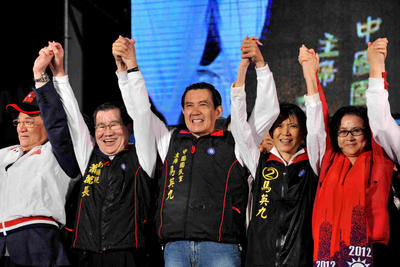But how did a close contest — that was once considered neck and neck — turn out to be a comfortable victory for Ma Ying-jeou of the ruling Kuomintang (KMT), as he defeated opposition candidate Tsai Ing-wen of the Democratic Progressive Party (DPP)?
Most observers have speculated that by refusing to acknowledge the existence of the 1992 Consensus, the DPP caused concern among business elites and workers, whose employment depends on positive cross-strait ties.
The so-called 1992 Consensus refers to a verbal cross-strait agreement on the meaning of the ‘One China’ policy. It has allowed Taipei and Beijing to engage in dialogue and negotiations without touching on the very sensitive issue of sovereignty. The Consensus grants that both sides of the Taiwan Strait agree on the existence of one China, but with different interpretations of what this entails. The acceptance of different interpretations has opened the door for Taiwan to engage in negotiations. This is largely because the existence of Taiwan as a separate sovereign entity — the Republic of China — is not explicitly denied under the current arrangement. It is this ‘agree-to-disagree’ approach that has somehow shelved the sensitive issue of sovereignty in China-Taiwan relations. From Beijing’s point of view, ‘One China’ is the one that is ruled by the Communist Party. Taiwan, though agreeing there is one China, nevertheless claims itself as the legitimate government of this entity. But neither side will openly deny the claims of the other in dealings.
Under this verbally agreed ‘consensus’, the Ma government resumed talks with mainland China when the KMT returned to power in 2008. The Straits Exchange Foundation and the Association for Relations Across the Taiwan Straits reached 16 agreements that helped to institutionalise this channel of communication. The Ma government also signed the Economic Cooperation Framework Agreement (ECFA), deepening economic integration which has helped Taiwan to weather the financial storm of the past three years.
Tsai Ing-wen opposed the ECFA, even engaging in a televised debate with President Ma when the agreement was first proposed. But after its initial benefits began to emerge, Tsai accepted the deal and claimed she would not negate the agreement. Tsai refused to acknowledge the existence of the 1992 Consensus — the basis on which negotiations took place, making the ECFA possible. Instead, she proposed a ‘Taiwan consensus’ that is full of rhetoric but short of substance.
Without a concrete proposal to replace the 1992 Consensus, business leaders — including those who invest heavily across the Taiwan Strait and those who have close trade relations with mainland China — began to openly support either Ma or the 1992 Consensus, which is considered part of the KMT platform. For example, Chang Yung-fa, a shipping magnate and founder of the Evergreen Group, supported the DPP presidential candidate in 2000 but openly endorsed the 1992 Consensus this time round. And Cher Wang, founder and president of the smart phone company HTC, held a press conference the day before the election, stressing the importance of continuity in cross-strait ties.
There might have been other factors leading to Tsai’s defeat. But her refusal to acknowledge the 1992 Consensus appears to be the biggest obstacle for voters, owing to the uncertainties of a DPP government that adopts such a policy. Even the youth in Taiwan’s work force — particularly the women that have been inspired by Tsai’s candidacy and who should be her core supporters — did not vote with their hearts but with their heads. Many feel their job security depends on a healthy economy that deteriorating cross-strait relations cannot sustain.
In the immediate aftermath of Tsai’s defeat, there have already been debates within the DPP on its approach toward mainland China in general, and the 1992 Consensus in particular. It is not an exaggeration to conclude that Taiwan’s 2012 presidential election was indeed a referendum on the 1992 Consensus.
Chen-shen Yen is a Research Fellow at the Institute of International Relations, National Chengchi University.


But Tsai Ing Wen won more votes than previously. What was the addition about? Were those votes a frustration of KMT’s shortcomings or were they against the 1992 Concensus. If it is due to the later that means support for Tsai’s “Taiwan Concensus” is gaining ground. The “Green Votes” still account for a significant block. What did they vote for?